Collins Sarah: The Standard of Ur

(fb2, 64 страницы, 320 Kb)
Жанр: Thames and Hudson
Издательство: Thames&Hudson, 2015
Ur, one of the world's first cities, was highly important politically and economically around 2600 2500 BC when the Sumerian rulers of the city were buried in tombs filled with ornate, valuable objects and with evidence of elaborate rituals and human sacrifice. Without the artefacts from the tombs of Ur it would be very difficult for us today to visualise Sumerian history and know anything about Sumerian art. Of all the objects found in the royal tombs of Ur, the Standard is the most informative yet also the most enigmatic. The Standard was given its name because it lay in a tomb near the shoulder of a man as if it had been carried like a battle standard. However, its real function and purpose within the tomb is still unknown. It was originally hollow, like a box, and is decorated on four sides with mosaic images created with inlays of shell, lapis lazuli and red limestone that were set into bitumen on a wooden frame. The two main, rectangular sides sometimes referred to as war and peace, show scenes of a battle and of a banquet. Both of these themes, commonly depicted in Mesopotamian art, are shown on the Standard using a narrative technique that was to be used in Mesopotamia for almost two thousand years and can still be appreciated today. Viewed as a remarkable work of ancient art the Standard testifies to sophisticated Sumerian craftsmanship and the wide trade networks and wealth of the city of Ur. More importantly for us today, it is also a realistic and lively representation of aspects of the life and concerns of people who lived in one of the world's great ancient civilisations during the third millennium BC. This beautifully illustrated short introduction tells the story of discovery and significance of this splendid object.